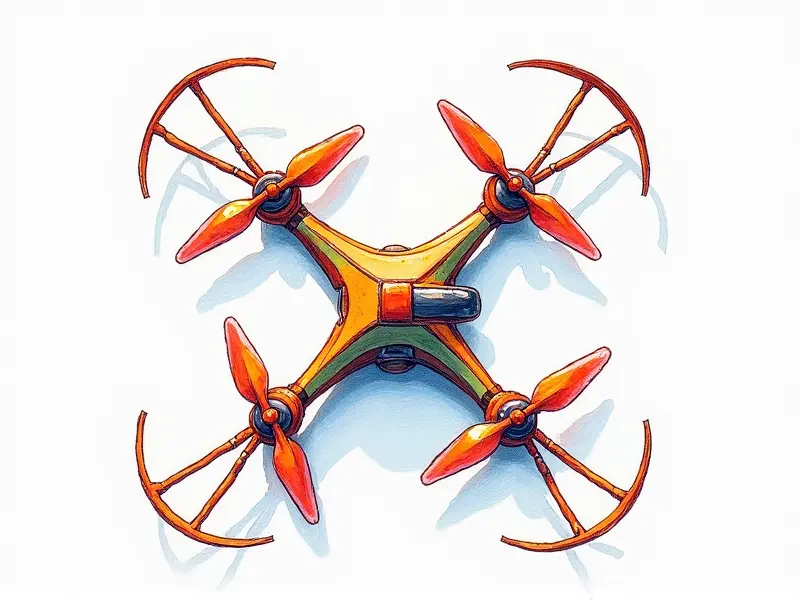Can I use a DJI drone in rain?

Can DJI Drones Handle Light Rain?
DJI drones are marvels of modern technology, designed to capture stunning aerial footage. However, one common question among drone enthusiasts is whether these devices can withstand the elements, particularly light rain. The answer isn't straightforward and depends on several factors.
Flying DJI Drone in Rain: Safe or Risky?
While some DJI models are more resilient than others to wet conditions, flying a drone in rain is generally risky. Most drones, including those from DJI, are not designed for prolonged exposure to moisture and can suffer significant damage if water enters the internal components.
Is It Okay to Fly DJI Drone in Drizzle?
Flying your DJI drone during a light drizzle might seem tempting, but it's still not advisable. Even minimal moisture can compromise the electrical circuits and motors of your drone, leading to potential malfunction or permanent damage.
DJI Drone Weather Resistance Explained
Understanding how weather-resistant your DJI drone is crucial before attempting any outdoor flight in less-than-ideal conditions. DJI drones typically come with some level of protection against dust and minor splashes but are not waterproof. The IP rating system provides a standardized way to measure this resistance.
Tips for Flying DJI in Light Rain
- Check the Weather Forecast: Always fly your drone on days with clear skies or light overcast conditions.
- Use Protective Gear: Consider using a weather cover or spray to protect your drone from unexpected moisture.
- Limited Flight Time: If you must fly in slightly damp conditions, limit the flight time and avoid prolonged exposure.
Risks of Using DJI Drone in Wet Conditions
Flying a DJI drone during rain or other wet weather poses several risks:
- Electrical Short Circuits: Water can cause short circuits, leading to immediate malfunction.
- Motor Damage: Moisture can corrode and damage the motors, reducing their efficiency and lifespan.
- Camera Issues: The camera lens may fog up or become scratched from water droplets.
How Rain Affects Your DJI Drone Performance
Rain can significantly impact your drone's performance in various ways:
- Battery Drain: Cold and wet conditions accelerate battery depletion, reducing flight time.
- Navigational Errors: Wet surfaces can interfere with GPS signals and other navigation systems.
- Signal Interference: Water droplets on the drone's body can disrupt communication signals between the controller and the drone.
Can You Safely Use DJI Drone During Rain?
Safely using a DJI drone during rain is challenging. While some models may handle brief exposure better than others, it’s best to err on the side of caution. If you must fly in wet conditions, ensure your drone has adequate protection and monitor its performance closely.
Protecting Your DJI Drone from Rain
To safeguard your DJI drone during wet weather:
- Weatherproof Covers: Invest in a high-quality cover that fits snugly over the drone to prevent water ingress.
- Dry Storage: Keep your drone stored in a dry, temperature-controlled environment when not in use.
- Regular Maintenance: Regular cleaning and maintenance can help keep moisture from damaging internal components.
Flying DJI Quadcopter in Light Rain
If you find yourself flying your DJI quadcopter during light rain, take the following precautions:
- Quick Flight: Limit flight time to a few minutes and land immediately if conditions worsen.
- Dry Immediately: After landing, dry off any visible moisture as quickly as possible.
- Inspect Components: Check for signs of water damage after each wet flight and address issues promptly.
Is My DJI Drone Waterproof for Rain?
No DJI drone is truly waterproof. While some models offer better resistance to moisture, it’s crucial to understand the limitations. Always refer to your specific model's specifications or consult with a professional if you're unsure about its water resistance.
Conclusion
Flying a DJI drone in rain poses significant risks and is generally not recommended unless absolutely necessary. By understanding the weather resistance of your particular model, taking appropriate protective measures, and closely monitoring performance during wet conditions, you can mitigate some of these risks. However, it’s always best to prioritize safety and avoid flying in adverse weather whenever possible.

